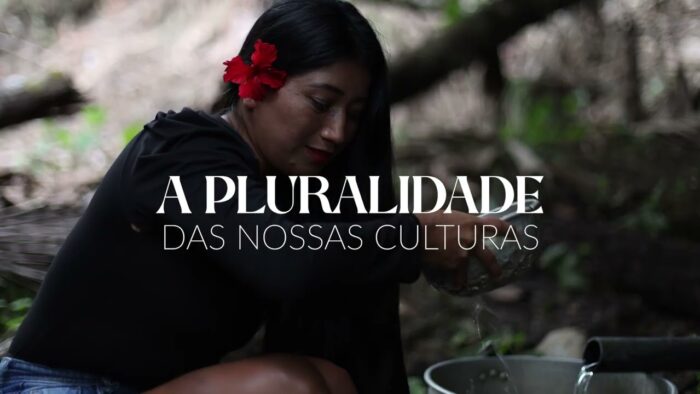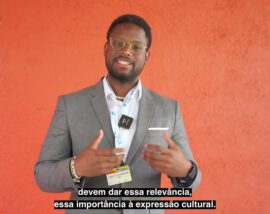Organization: UN Children’s Fund
Country: Honduras
Closing date: 01 Sep 2017
Honduras muestra avances en la consolidación del marco normativo y de políticas sobre los derechos de la niñez. La promulgación de la Ley Fundamental de Educación en el año 2012 y la reforma integral realizada a la legislación sobre niñez y familia en el año 2013 son claros ejemplos de la voluntad del poder legislativo de adaptar el marco normativo a los estándares internacionales sobre derechos del niño. En materia de políticas públicas, desde el año 2012 se han venido aprobando políticas públicas determinantes para el desarrollo de la niñez, como son la Política de Atención Integral a la Primera Infancia (PAIPI), la Política de Protección Social, la Política de Prevención de Violencia hacia la Niñez y Juventud, y otras políticas relevantes para la niñez hondureña.
No obstante, existe una serie de retos en la creación y articulación de un Sistema de Protección Integral de la Niñez en Honduras. Uno de ellos es lograr mayor correspondencia del marco legal con el Código de la Niñez y fortalecer el marco legal de la institución rectora del sistema. La implementación del marco de políticas públicas nacionales aprobadas, se ve limitada por la insuficiente asignación de presupuestos. La generación de evidencia sobre el ejercicio de los derechos de la niñez, efectividad de políticas públicas y estrategias nacionales, equidad y eficiencia del gasto social en la niñez, es una necesidad imperiosa.
Por ello, UNICEF contrató al consultor internacional Alejandro Morlachetti para proceder a un análisis del marco normativo de Honduras basado tanto en el análisis de la legislación existente relacionada con niñez y adolescencia, como en fuentes secundarias ya existentes. Este análisis servirá para identificar las principales brechas respecto de los estándares internacionales en materia de niñez y adolescencia e incluirá una serie de recomendaciones que servirán de base para una posible reforma legal.
Como segundo producto, el consultor internacional partirá del análisis normativo para coordinar la aplicación de una herramienta de indicadores que permita clasificar y medir el nivel de progreso alcanzado en respecto del sistema nacional de protección de la niñez, con el objeto de medir si se cumplen las pautas mínimas y esenciales desde una perspectiva de derechos para ser eficaz en la protección integral de sus derechos y también en la prevención y protección contra la violencia, incluyendo el abuso, la negligencia y la explotación.
Para este segundo producto, se busca el apoyo de un Consultor nacional para liderar el desarrollo del proceso de recolección de la información en Honduras y la realización de las entrevistas necesarias para la aplicación de la herramienta de indicadores (Ver anexo A), con el apoyo de la guía para la aplicación de la herramienta (Ver anexo B).
Luego, el Consultor nacional aplicará la herramienta de indicadores basados en derechos para medir y evaluar los niveles de progreso respecto de la existencia de normativa y de un sistema nacional de protección, y en particular un subsistema de protección contra todas las formas de violencia.
El proceso de recolección será liderado y supervisado a la distancia por el consultor internacional para asegurar el enfoque necesario para obtener información clave que permita el desarrollo de la evaluación.
Objetivo de la Consultoría
El Consultor nacional será responsable de aplicar la herramienta de indicadores basados en derechos para medir y evaluar los niveles de progreso respecto de la existencia de normativa y de un sistema nacional de protección, y en particular un subsistema de protección contra todas las formas de violencia.
Actividades y/o Responsabilidades
Asistir a una sesión formativa (via skype) con el consultor internacional para familiarizarse con la herramienta de indicadores y su guía de aplicación
Leer y conocer en detalle tanto la herramienta de indicadores y su guía de aplicación
Diseñar una propuesta de instrumentos para recoger la información primaria y secundaria siguiendo la herramienta de indicadores y su guía de aplicación
Aplicar los instrumentos diseñados y sistematizar la información obtenida conforme los indicadores que componen la herramienta para su posterior análisis por parte del consultor internacional
Mantener un nivel de interacción con el consultor internacional en función de obtener información de calidad para la evaluación a través de la herramienta de indicadores
Productos Esperados
Producto 1) Diseñar una propuesta de instrumentos para recoger la información primaria y secundaria:
1.1. Capacitación y coordinación
1.2. Diseño de instrumentos de recolección de información
Producto 2) Validación de los instrumentos propuestos e incorporar modificaciones o ajustes de ser necesario.
2.1. Validación en campo
2.2. Ajustes a instrumentos
2.3. Revisión y aprobación
Producto 3) Recolección de información por medio de la aplicación de los instrumentos validados:
3.1. Elaborar calendario de entrevistas, talleres y grupos focales
3.2. Administrar instrumentos
3.3. Registrar y procesar información
Producto 4) Sistematización de la información recogida en los instrumentos y/o formatos de análisis acordados con el consultor internacional.
4.1. Completar formatos de recolección y análisis de información
4.2. Elaborar sistematización final
Perfil Requerido
Formación Académica
Sólida formación de pre- y post-grado en ciencias sociales: economía, sociología, antropología, trabajo social, derecho u otra afín a los objetivos planteados para la consultoría
Sólida formación en investigación y análisis de información cuantitativa y cualitativa. Deseable conocimiento del marco analítico del Unicef.
Experiencia
Al menos 5 años de experiencia en investigación social en temas relacionados con la niñez, derechos humanos y/o inequidad demostrable por medio del registro de publicaciones realizadas. Deseable experiencia especifica en la implementación de herramientas de monitoreo y evaluación.
Experiencia previa en coordinación de procesos participativos de investigación.
Competencias
Habilidades analíticas, de redacción y comunicación demostrables a través de publicaciones relevantes para los fines de la consultoría.
Familiaridad con un enfoque de niñez, demostrable a través de registro de publicaciones pertinentes.
Criterios de Selección
La selección del profesional se hará basada en los siguientes aspectos y ponderaciones:
Conocimiento (incluyendo el conocimiento deseable): 20%
Experiencia (incluyendo la experiencia deseable):25%
Propuesta técnica:25%
Costo (incluyendo movilización):30%
Duración Estimada:
Dos (2) meses a partir de la firma del contrato.
Lugar de Trabajo:
a. Lugar de desarrollo de la Consultoría:
La consultoría se podrá desarrollar desde cualquier sede para trabajar en los productos que solo requieren trabajo de escritorio, pero se necesitará trabajar en la ciudad de Tegucigalpa, Francisco Morazán, Honduras, para desarrollar el trabajo de campo y las entrevistas.
b. Visitas al campo:
Se deberán prever todas las visitas necesarias acorde a la metodología propuesta de medición de indicadores.
c. Viajes aéreos o terrestres:
Si el consultor seleccionado vive en el extranjero o en un lugar de Honduras fuera de Tegucigalpa, se preverán los viajes que el consultor planifique necesarios para cumplir con las responsabilidades dentro del alcance de la consultoría. El consultor deberá gestionar directamente sus boletos y trámites administrativos, cuyos costos deberán incluirse como parte de la oferta económica para desarrollar esta consultoría.
Viáticos:
En caso de requerirse, estos costos deberán incluirse como parte de la oferta económica para desarrollar esta consultoría.
e. Espacio y equipo de Oficina:
El consultor procurará su propio espacio de oficina y equipo.
f. Seguros:
El consultor adquirirá sus propias pólizas de seguro para soporte de gastos médicos y/o de accidentes personales que le cubran estas eventualidades mientras dure el presente contrato. UNICEF no asume responsabilidad por algún accidente que el consultor pudiera sufrir, ya que este contrato no supone relación patronal de ningún tipo.
g. Entrega de productos y/o reportes:
El consultor entregará los productos y reportes acordados por medio electrónico, en lenguaje universalmente aceptable y a satisfacción de la supervisión de esta consultoría. Los gastos de emisión y entrega de estos productos/reportes, correrán por cuenta del consultor.
h. Reserva de derechos de propiedad:
Todos los documentos, materiales o productos de la presente consultoría son propiedad de UNICEF y no podrán ser utilizados por terceros sin su autorización.
Honorarios y forma de pago:
Sujeto a condiciones establecidas en el contrato. Pago contra entrega de factura y productos esperados en el acápite IV y a entera satisfacción de la supervisión del contrato.
20% a la entrega del Producto 1
20% a la entrega del Producto 2
20% a la entrega del Producto 3
40% a la entrega del Producto 4
Supervisión
El trabajo del Consultor Nacional se desarrollará bajo la supervisión del Especialista de Protección de UNICEF Honduras y del Consultor Internacional responsable por la consolidación y evaluación de los niveles de progreso respecto de la existencia de normativa y de un sistema nacional de protección.
Aplicaciones
El interesado en aplicar a esta consultoría debe entregar lo siguiente:
Una carta de aplicación donde destaque el conocimiento, experiencia y competencias relevantes para el desarrollo de esta consultoría.
Su hoja de vida actualizada.
Una propuesta técnica en la que describa brevemente el proceso que llevaría a cabo para desarrollar la consultoría.
Una oferta económica que incluya sus honorarios profesionales a suma alzada para la realización de la consultoría y en caso de residir fuera de Honduras, por separado entregar un plan de viajes y estadías en la ciudad con su respectiva estimación de costos por transporte, gastos terminales y viáticos.
To view our competency framework, please click here.
Please indicate your ability, availability and daily/monthly rate (in HNL) to undertake the terms of reference above (including travel and daily subsistence allowance, if applicable). Applications submitted without a daily/monthly rate will not be considered.
UNICEF is committed to diversity and inclusion within its workforce, and encourages qualified female and male candidates from all national, religious and ethnic backgrounds, including persons living with disabilities, to apply to become a part of our organisation.
How to apply:
UNICEF is committed to diversity and inclusion within its workforce, and encourages qualified female and male candidates from all national, religious and ethnic backgrounds, including persons living with disabilities, to apply to become a part of our organization. To apply, click on the following link http://www.unicef.org/about/employ/?job=506746


